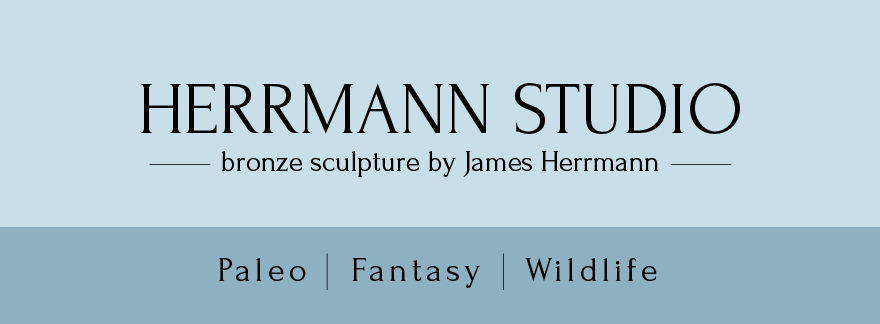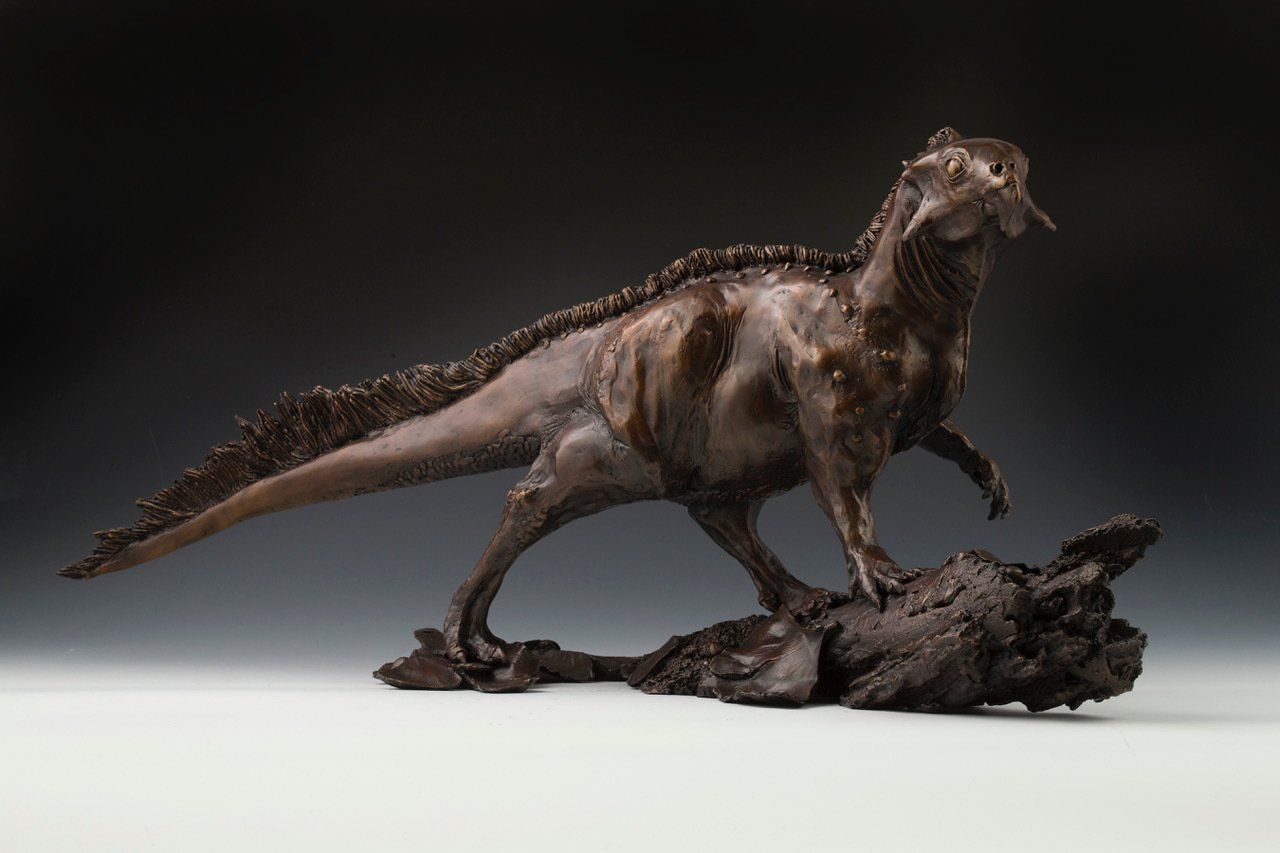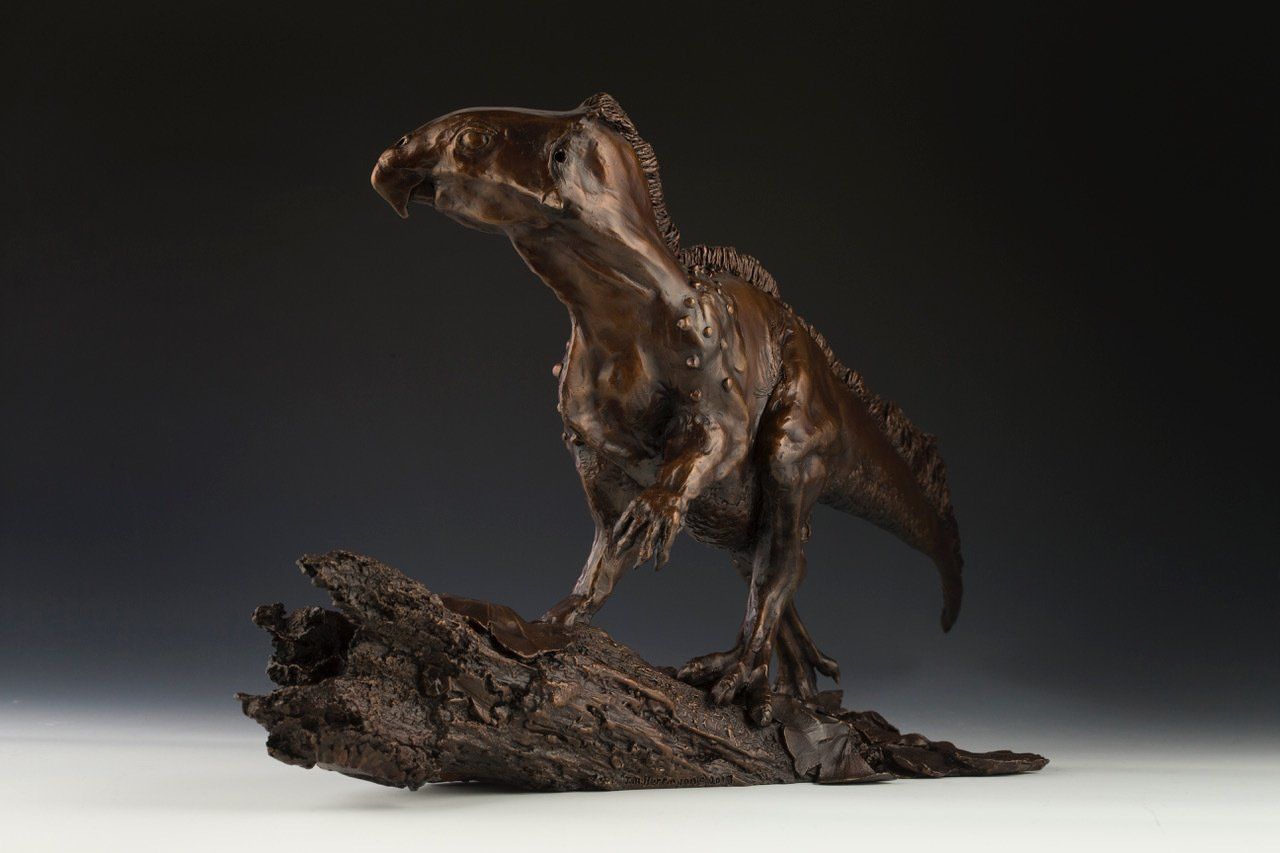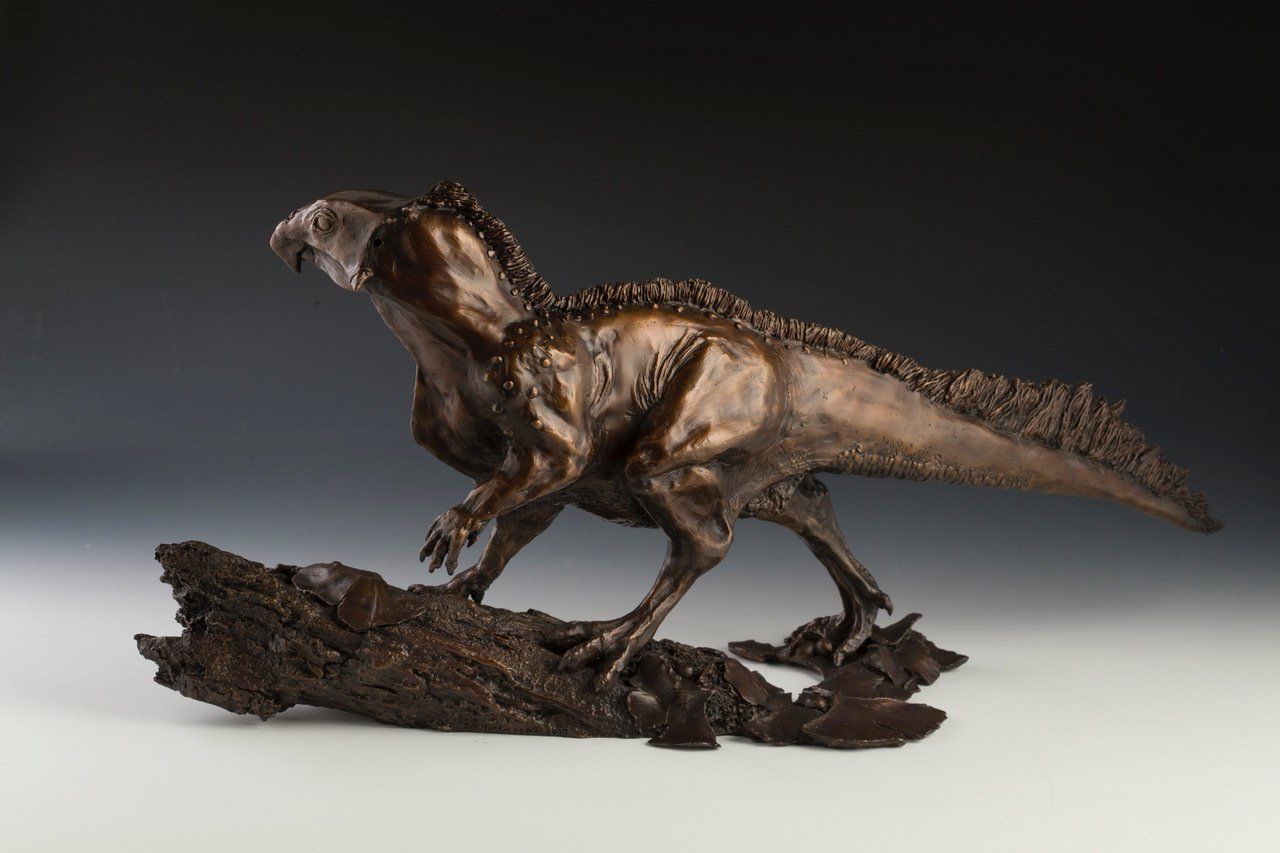Aquilops Americanus
Aquilops Americanus
Medium – Cast bronze on a green stone base
Dimensions – 17"H X 32"W X 14"D
Limited edition of 20 • Price $6,500
Aquilops Americanus is a ceratopsian dinosaur from the same family tree as triceratops but from much farther back in time. Triceratops lived at the end of the Cretaceous, around 65 million years ago while Aquilops lived early in the Cretaceous, around 108 million years ago. There is also a large difference in size between Aquilops and its much later relatives like triceratops. While triceratops is as large or larger than a bull African elephant, Aquilops was small. A full grown Aquilops Americanus was about the size and weight of a house cat.
Aquilops is known from one small skull discovered in Montana in 1997. It does not have a frill like its later relatives and did not have horns. It did however have a bony keratin covered beak. Its body shape is a bit of an educated guess. While we do not have any
post-cranial remains of Aquilops, we do have some wonderfully preserved remains of a close Asian relative living at approximately the same time that scientists have named Psittacosaurus. Psittacosaurus was so well preserved that its skin was fossilized even to the extent of preserving the pigment melanin. Psittacosaurus had a very interesting row of bristles extending high above its tail, interesting patterns of scales running the length of its body and a color pattern similar to forest dwelling animals.
I sculptured Aquilops using information from its skull reconstruction and the information available from the fossil Psittacosaurus. Just as lions and tigers have skeletons that are almost identical but exhibit different coat length and color, Aquilops would have also been different from Psittacosaurus. I thus used artistic license to shorten the row of bristles on the dorsal surface of the tail and extended the bristle up the back to the base of the skull. As this little dinosaur was definitely hunted by larger predators, its coloration and bristles served to break up its outline effectively, camouflaging it on the shady forest floor where it lived.
As I sculpted Aquilops, I imagined it scurrying through the forest, pausing frequently to listen, ever alert for predators. Gingko trees would have been common in the time Aqualops lived so I sculpted it running across a rotting log blanketed with fallen gingko leaves and seeds, fruit that it might very well have eaten.
© 2024
All Rights Reserved | Herrmann Studio LLC | James Herrmann
Permission to reproduce works, whether in print media or any electronic media, or any technologies not in current use, must be obtained prior to use.




